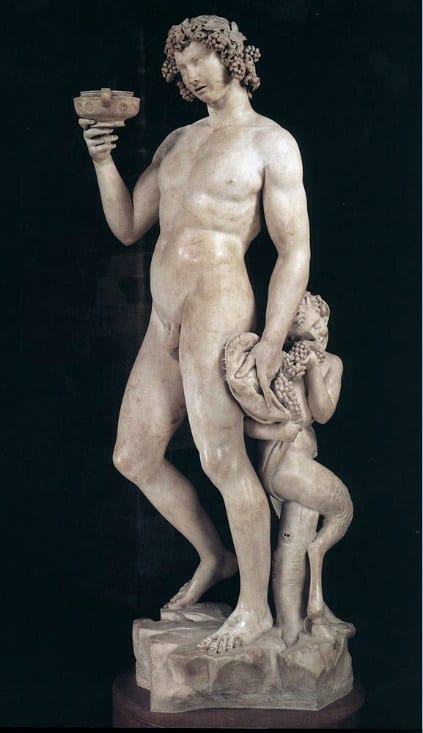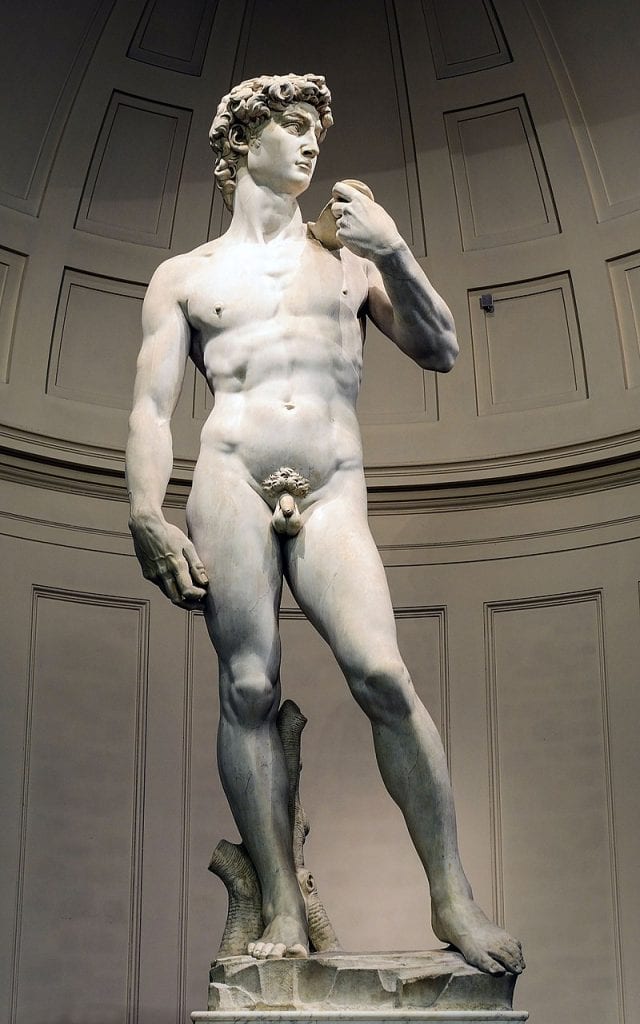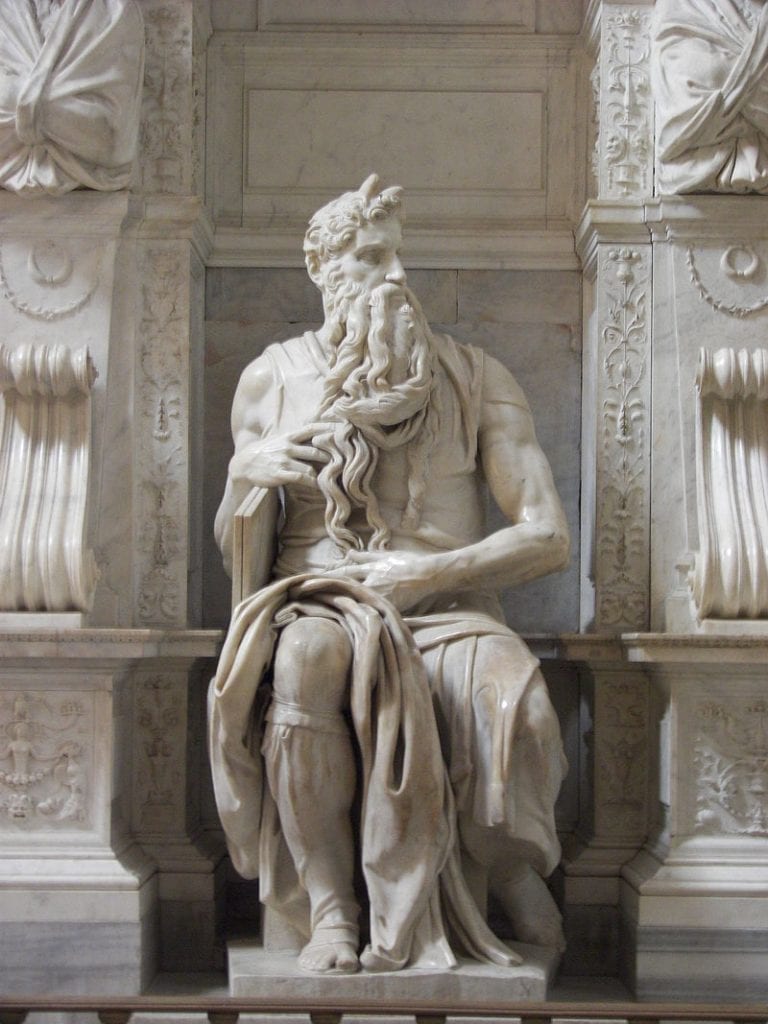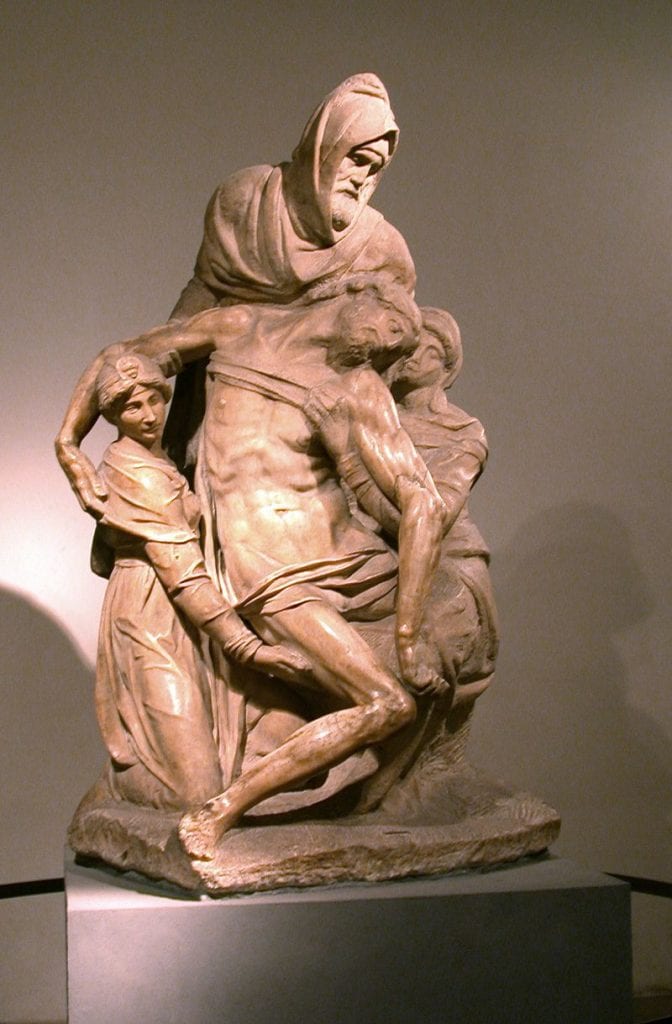Born on the 6th of March 1475, in Caprese, in Florence, Michelangelo di Lodovico Buonarroti Simoni was an Italian sculptor, architect, poet, and painter. He was an influence at the time of the Italian Renaissance, being unparalleled in his skill and talent. His work was all undertaken during the Early Renaissance. In his lifetime, and to this day, he is considered the most prolific artist to have ever lived. He sculpted and painted several works of art.
Of all the works of Michelangelo, he is distinguished for his singular frescoes on the Sistine Chapel ceiling. He was mainly a sculptor, and was very comfortable working with marble. He was proficient in many art forms. This wasn’t a strange practice for the time he lived in.
Many of the works of Michelangelo were commissioned by the Vatican City and the Medici family. The Médicis were influential in Florence and were proponents of art and culture. They were wealthy and used their wealth to promote art and sculpture during the Renaissance. Do read on to know about the artistic works of this truly Renaissance Man.
Bacchus

In 1496-97, Michelangelo sculpted the statue of Bacchus. This sculpture portrays the Roman God of Wine. In the sculpture, the Divine figure is standing on a rock, wearing an ivy wreath on his head. In one hand, he is holding up a goblet, as if to take a sip. In the other, he holds the skin of a lion, symbolic of death. This is derived from the mythological story of Hercules. His expression shows him in a state of drunkenness. Behind Bacchus’ left leg, stands a satyr, peeking out. Bacchus has often been depicted with hints of wickedness, being a God who drinks wine in woods and forests.
Michelangelo fashioned the God of Wine as a very large sculpture, primarily meant for a garden. It gives the view of the actual human figure from all angles. This is another point of uniqueness for sculpture from this period. Considered one of Michelangelo’s works that were early works, the sculpture was the subject of a lot o controversy. Originally commissioned by the Cardinal Riario, and inspired by a lost bronze sculpture by Praxiteles, it was rejected by the Cardinal. Michelangelo had worked on the piece based on merely a description as the original inspiration was lost. The sculptor had no choice but to sell it to his banker, Galli.
An early, probably first, work by the sculptor, the statue is evidence of Michelangelo’s genius and accomplished anatomical knowledge of the male human physique. The figure has a high center of gravity and this lends it movement. The sculptor would later perfect this further with the statue of David. Michelangelo has shown a still figure that one can see as “swaying” in a drunken stupor. The real and the artificial merged with the creation of Bacchus.
Pieta

Several works of Michelangelo were Pietas. This was the first of many more that would follow, but undeniably acknowledged as the best. The statue is a depiction of Jesus Christ in his mother’s lap after the Crucifixion has taken place. The scene is one of the sorrows of Mary. This is normative of Christian devotional prayer practice and shows an important moment in Mary’s life. Once it was completed, it gained instant fame. Rumors also spread that it was made by one of the artist’s competitors. In a fit of rage, Michelangelo signed his name across Mary’s sash. This is the only work that was signed by him.
Commissioned by Cardinal Jean de Bilheres, he claimed that it was his aim to have the most beautiful marble statue in Rome. He wanted that it turn out to be a work of art that no living artist could improve on or excel in. Michelangelo, 24 at the time, rose to the occasion, taking nearly two years to complete carving the Pieta out of a single marble block. He began in early 1498, and finished it in late 1499. It is a piece of work that is authentic to all the ideas of what the Italian Renaissance stood for. Pieta is at St. Peter’s Basilica, Vatican City, Rome.
Mary was a common subject among artists of the time and was shown in a myriad way in art and sculpture. Though an older woman in her 50s at the time of the Crucifixion, Michelangelo created her as a young beauty. It was the artist’s belief that chaste women remain youthful and fresh longer than those who are not. The Pieta was the first depiction of this scene in the material of marble. Christ seems asleep in Mary’s tender arms, rather than if He were just crucified. The idea of this portrayal was that Mary was waiting for the resurrection, knowing that he would rise again.
David

To be sure, the statue of David at Florence is one of the works that Michelangelo is identified by. The statue of pure white marble is 17 feet tall. It shows David, the prophet, standing in a majestic posture, and nude. He is holding the slingshot with which he killed Goliath. The pose of David is victorious, with the slingshot over one shoulder. The work was commissioned by the Opera del Duomo for the Cathedral at Florence. He worked on the statue from 1501 to 1504. David’s statue is reminiscent of the classical biblical tale, but it also stood to symbolize the new Republic of Florence, gaining independence from the rule of the Medicis.
The statue of David is one of Michelangelo’s works that is singular in its execution. It is an excellent example of his knowledge of human male anatomy. This is obvious in the rendition of David’s musculature. The statue also shows the quality of strength in the stance that is depicted, with the bearing of weight on one leg. Of all the works by Michelangelo, this stands out for the traits of determination and confidence. The top of the body was made purposely larger that the bottom. This was done so that viewers who saw it from far off, or glancing up at it, would get a better perspective.
As most of his work was, the statue prompted initial controversy for its stark physiology and accuracy in its nudity. It was soon admired, and to this day, it is so as it stands in the Galleria dell’Accademia in Florence, Italy. Considered one of the most iconic works in marble, its plaster cast is displayed at the Victoria and Albert Museum in London, UK.
Holy Family

In 1506, Michelangelo painted the Doni Tondo or Holy Family. This is the only panel among all the works by Michelangelo have survived the ravages of time. It was commissioned by Agnolo Doni at the time of his marriage to the daughter of an influential family from Tuscany. The panel shows Jesus Christ, Mary, Joseph and John the Baptist, as an infant. In this panel, the tenderness and intimacy is so evident.
This work represents the core of the Catholic faith, that of love and care. Contrastingly, there are five nude pagans in the background. These are symbolic of something bad awaiting redemption. The tondo or round form was the common way to depict paintings and the delicate gold frame was designed by the artist himself. It is said that Michelangelo was inspired by Da Vinci’s The Virgin and Child, when he painted this. This painting shows a realism that was lacking in other artists’ works during the High Renaissance. The panel is located at the Galleria degli Uffizi, Florence, Italy.
The Creation of Adam

This is a masterpiece unto itself, although it is part of the abundant ceiling of the Sistine Chapel in the Vatican in Rome. Again, Michelangelo was a master of the portrayal of the human physique, and this painting shows Adam as a muscular ideal nude man. As he reclines, he extends his arm to God, who also lends his hand. God is shown as rushing towards Adam, and you can see this in the depiction of His white robe and the active energy manifested. Surrounded by angels and cherubs, the holiness wrapped in a red cloud. There is the manifestation of a feminine figure too, possibly Eve or Sophia, thought to be symbolic of wisdom. She is peering out curiously from under the arm of God.
Anyone who views this elaborate wonder notices the hands of God and Adam, almost touching. This is because Michelangelo has created a strong diagonal to give importance to the division between man and God. This is a unique depiction of God as it is an antithesis of earlier works by other artists. They portrayed God as aloof and restrained, away from mortals. Here, Michelangelo sought to show God in a new light as the giver of life to man, who He himself created.
Moses

Michelangelo sculpted an extravagantly large grand statue of Moses from 1513 to 1515. Moses is depicted as being seated and guarding the holy tablets of the Ten Commandments. Moses is portrayed with a stern countenance, representative of his rage at viewing people worshiping the golden calf. This statue was originally commissioned by Pope Julius II in Rome for his tomb. It is now at the San Pietro Church in Rome, where Pope Julius II had once been served as Cardinal.
It is said that Pope Julius II interrupted the creation of this work by Michelangelo in order for him to start the work of the Sistine Chapel. Michelangelo didn’t take kindly to this but had to oblige the head of the Catholic Church.
The Last Judgement

From 1536 to 1541, Michelangelo’s work took on new meaning as he continued with the fresco in the Sistine Chapel. The Last Judgement was one of the final pieces to be added to the elaborate masterpiece that had already taken shape. It was commissioned by Pope Clement VII. At this time, the artist was 62. The fresco depicts the Second Coming of Christ as he lays forth The Last Judgement. This epic among epics of works by Michelangelo took all of five years to create. It has 300 individual figures painted in it, and is a scene of harrowed activity surrounding Jesus Christ. Christ is the central figure, with his hands exposed, showing the wounds effected by his Crucifixion. Again and again, his paintings have suffered controversy, but he was stubborn and wished to depict subjects in them in the nude.
The Deposition

The Deposition is a work by Michelangelo that is not only technically complicated, but has many implied meanings attached. Christ is shown the moment after he has been taken off the cross, or after the deposition. Falling into the arms of his mother, Mary, and Mary Magdalene, the statue also shows a hooded person who may have been Joseph. The statue has a remarkable three-dimensional quality and is shown with realism. Making this was painful and arduous for the artist, but you can see his quest for perfection and flawlessness. Some experts say that he was essentially particular about this piece because he intended to have it for his own tomb. It is now housed in the Museo dell’Opera del Duomo in Florence, Italy.
